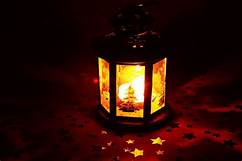February 5, 2018
by Jackie Bubis
The courtroom was full to overflowing for the Custer County Planning Commission (PC) meeting on Monday afternoon. The citizens were there to make their voices heard on the on-going work the PC is doing, as requested by the Custer County Commissioners last year, to study requested changes made by the local Dark Skies International group concerning regulating outdoor lighting in the county. The Dark Skies group defines outdoor lighting as “light pollution”. This has been a highly controversial topic in the county for the past year or so and was one of the reasons for the successful recall of two County Commissioners who supported the Dark Skies proposals last November.
It was clear from the letters that Planning and Zoning Director Jackie Hobby read that many were operating under the idea that Dark Skies was still asking for regulations and attendant penalties for normal outdoor lighting. The PC Board pointed out that this was not the case, that Dark Skies had recently changed its original proposal and now was only asking that the definition of light pollution in the Zoning Resolution be changed from:
“Degradation of the night sky by artificial light rays above the projected horizontal plane of a light fixture” to “Degradation of the night sky by artificial light rays above the projected horizontal plane of a light fixture and with a color temperature exceeding 3000 degrees Kelvin.”
Mrs. Hobby pointed out that anything in the Zoning Resolution has penalties attached, but that the definitions are simply that: definitions.
Some felt that if that was all that was being discussed, it was a moot point. However, that was not unanimous in any way. Many there believed that this newly proposed “minor” change that Dark Skies wanted in the definition was just a ploy for the national and international Dark Skies organizations to get a foot in the door here in Custer County. And that once recognized in the Zoning Resolution, it would be the beginning of the classic “slippery slope” with additional requests coming in the future. A camel’s nose under the tent was the phrase often used.
The letters read were slightly more in favor of Dark Skies “regulations.” The people who spoke were over 2-1 against.
The Planning Commission diligently allowed anyone who wanted to speak to do so.
One citizen pointed out that perhaps the best place for the entire topic of light pollution was in the Master Plan.
· A local rancher reported that he had tried the hooded lighting on his ranch and that it simply did not work for him.
· Another citizen noted that the Right to Ranch protected ranchers from any of the Dark Skies “regulations.” Mrs. Hobby stated that the entire county is designated as agricultural.
· Another citizen stated that since the Zoning Resolution links “air, water, noise, and light pollution” but that air, water and noise pollution are not defined in the document, neither should light pollution be defined.
Despite Mrs. Hobby’s reminder that anything in the Zoning Resolution was subject to the enforcement provisions within the document (Section 12), which includes criminal and civil penalties, the statement continued to be made that there was no enforcement or penalties. One citizen reminded the Board that, even if that were the case, the document could be used for civil litigation, neighbor against neighbor. (Editor/GG: Which is a real-world situation. Wording in the Zoning Resolution can be used in civil suits.)
Once the public had been heard, the Board members got a chance to discuss the issue. There continued to be concern about a special interest group putting language or rules into the document. Other concerns were that the 3000 Kelvin was not measurable in the field and how would this wording be enforced. Another point, made by Chairman Vic Barnes, was that 40% of the county is federal land and of the remaining 60%, 75% of that land is ranch land that would not have to comply.
In a somewhat controversial move, which had some in the audience wondering at the appropriateness of him speaking, Commissioner Printz spoke about why he sent the item to the Planning Commission, that he thought it would be beneficial to the economy and that he did not see a downside to it. (Editor/GG: Our personal property rights being infringed by special interest groups apparently is not a “downside” to Commissioner Printz. Apparently, special interest groups’ desires trump our Constitutional rights in his globalist world view. Seems he already has forgotten the landslide defeat of his building codes ballot initiative last November. Our Commissioners were elected to serve the people of our county, not outside special interest organizations. A few tourist dollars, Commissioner Printz, does not invalidate our property rights. Wake up, sir. This is Custer County, not Austin, Texas.)
When the discussion was done, Pat Bailey made the motion to leave the definition as is (to not include the extra wording) and also that the Planning Commission look at each definition to determine if it needs to be in the document and if it is accurate. The motion passed 6-1, with Dale Mullen casting the opposing vote. Those on the Commission voting against the Dark Skies proposal were Chairman Vic Barnes, Pat Bailey, Bill Donley, Keith Hood, Chris Nordyke, and Lance Ingram (associate member replacing Patrick Lynch who couldn’t make the meeting). The sole Board member voting for it was Dale Mullen.

